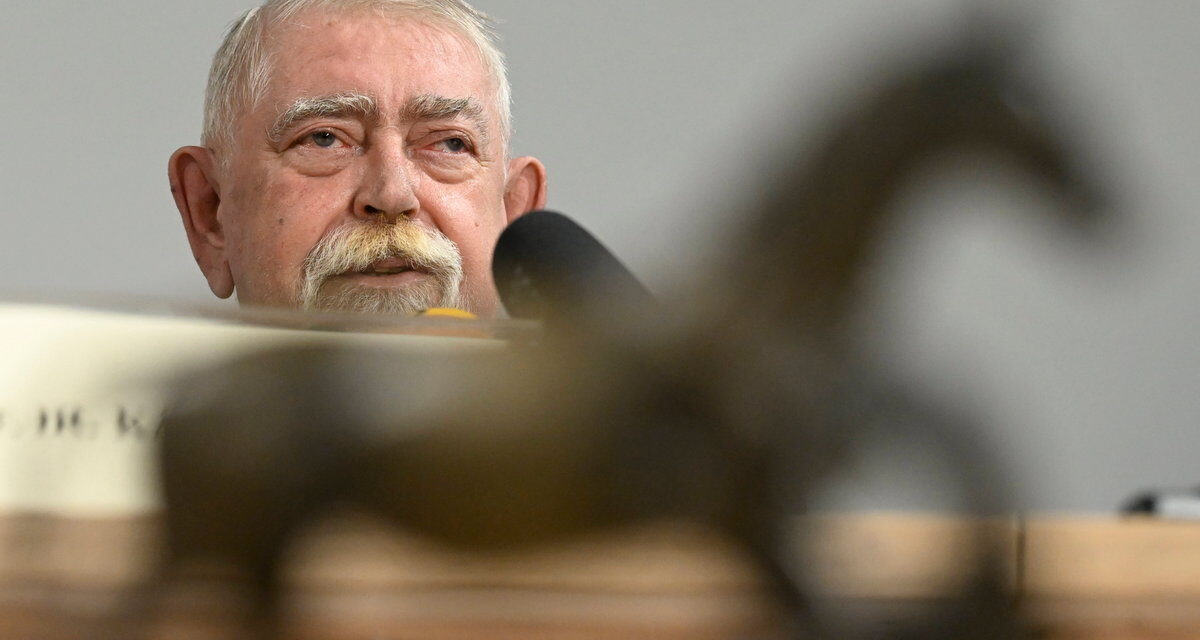At the press conference held on the subject at the Hungarian Research Institute, they also talked about the breeding, training and preservation of a horse similar to the Kunfakó during the time of the Hungarian conquest. Thanks to the balanced nervous system of the Kunfako-type horse, it is suitable for preserving traditions, equestrian archery, riding children, and can also be kept as a hobby animal.
Lajos Kassai said that breeder András Eördögh, president of the Association of Ancient Horse Breeds Breeders, bred a horse bearing characteristics from the time of the conquest, which is similar to the ancient Kunfakó horses. He said that training plays an essential role for these horses as well. During the habituation phase, the horses are taught to stand and to be resistant to all external influences.
Among the characteristics of the kunfakó is that it is suitable for long journeys, and it is also a pious, easy-to-handle, friendly, heavy-duty, hardy animal.
he listed.
Mikós Kásler , the director general of the Hungarian Research Institute, said: We have information about our ancestors, their fighting style, horses, horse tools and weapons from the work of the Byzantine emperor Leo Bölcs entitled Tactics, as well as from archaeological finds. In addition to the reconstruction of weapons and horse tools, the aim is to breed horses most similar to the horses of our ancestors.
Péter Sótonyi , rector of the University of Veterinary Medicine, said that the kunfakos of the Árpád era were resistant, which resulted from their fighting style and migration. Kunfakó horses had to be unpretentious, cover long distances and have a good nervous system.
He explained: the breeders did not genetically bring back the Kunfako from the time of the conquest, but it would be worthwhile to carry out genetic laboratory tests on how similar the gene stock created as a result of this breeding is to the horses of our conquering ancestors. Such genetic tests can be carried out from contemporary bone findings, he added.
"If they have the same load capacity and nervous system as the ancient horses, then it must also be reflected in the genes. This can be proven sooner or later"
- pointed out the rector, adding that the color of the ancient horses might have been similar to the ones of today.
Gyula Dallos , Minister Commissioner responsible for the renewal and implementation of the National Equestrian Program of the Ministry of Defense, recalled that our ancestors lived in a close relationship with their horses. He believed that it was only possible for breeders to achieve results so quickly with individuals that genetically carry the knowledge, strength, and intelligence that their predecessors possessed.
According to Gyula Dallos
thanks to the balanced nervous system of the Kunfako-type horse, it is suitable for preserving traditions, equestrian archery, riding children and can also be kept as a hobby animal. We need horses of this nature
he emphasized.
András Eördögh talked about how
He devoted 30 years of his life to the re-emergence of the Kunfakó type of breed. The ancient horse received the name Kunfakó from the Kuna landscape and its characteristic color.
MTI
Cover photo: Miklós Kásler, director-general of the Hungarian Research Institute, at a press conference on February 26, 2024, about the breeding and training of a horse similar to the Kunfakó during the Hungarian occupation.
Breeder András Eördögh, the president of the Õsi Lófjátát Tanyéstők Egyesületk, has worked for 30 years to breed a horse bearing the character of the conquest era, which is similar to the ancient Kunfakó horses. MTI/Tamás Kovács













